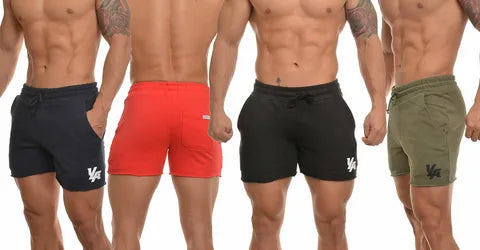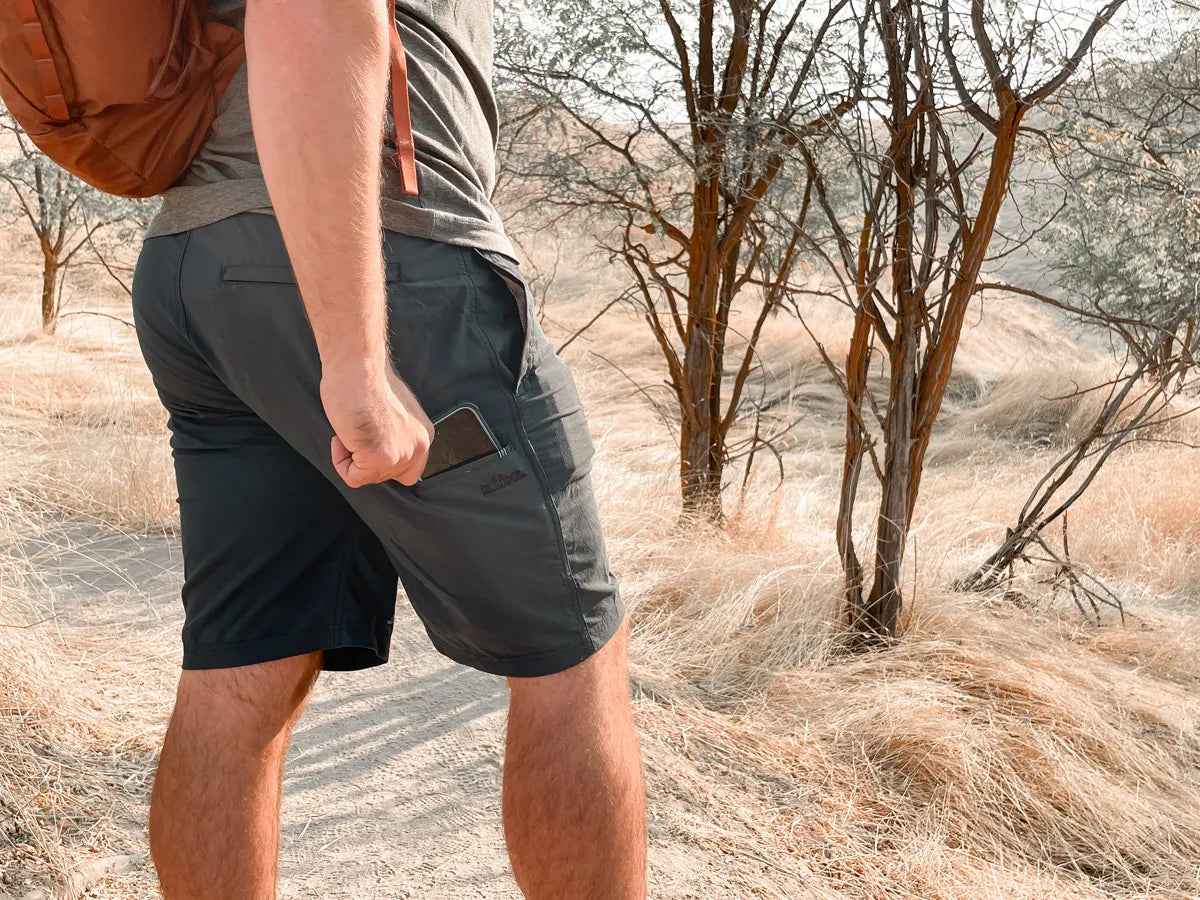For fitness enthusiasts across Australia, selecting the right workout clothing represents more than just a fashion choice - it's an essential component of athletic performance. The best activewear for men combines technical fabrics with intelligent design to enhance training sessions while accommodating Australia's diverse climate conditions. From the humid tropics of Queensland to the cooler southern regions, high-quality gym wear adapts to environmental challenges while supporting a full range of movement. This comprehensive guide explores the critical factors Australian men should consider when building their workout wardrobe, ensuring every piece delivers both comfort and functionality.
Understanding Fabric Technologies in Modern Activewear
Contemporary men's fitness apparel incorporates advanced textile engineering to address the specific demands of different workout types. Moisture-wicking fabrics featuring specialized polyester or nylon blends actively pull sweat away from the skin, accelerating evaporation to keep athletes dry during intense sessions. These technical materials often include four-way stretch capabilities, allowing complete freedom of movement whether executing deep squats or explosive jumps. Many premium options now integrate antimicrobial treatments that inhibit odor-causing bacteria, a particularly valuable feature for high-intensity interval training in Australia's warmer climates.
For outdoor enthusiasts, UPF-rated fabrics provide essential sun protection, with the best options blocking 98% of harmful UV rays without sacrificing breathability. The latest innovations include phase-change materials that adapt to body temperature fluctuations and fabrics treated with saltwater resistance for coastal training. These technological advancements ensure Australian men can train comfortably year-round, regardless of weather conditions or workout intensity.
Selecting the Ideal Gym Shorts for Your Training
The foundation of any workout wardrobe begins with choosing the right men's gym shorts, with optimal selection varying significantly by activity type. Running shorts typically feature a 5-7 inch inseam, lightweight construction, and built-in compression liners that eliminate chafing while providing support. This design prioritizes unrestricted stride length and incorporates reflective elements for safety during pre-dawn or evening sessions.

Weightlifting demands a different approach, with 7-9 inch inseam shorts offering the ideal balance of coverage and mobility. Look for models with gusseted crotches that prevent fabric pull during sumo stances and reinforced seams capable of withstanding hundreds of heavy squat sessions. The best options for CrossFit and HIIT incorporate abrasion-resistant panels in high-wear areas like the inner thighs, along with secure pockets that keep essentials in place during box jumps or handstand push-ups.
Performance Tops for Varied Training Needs
Complementing quality shorts, the best men's workout tops adapt to specific training requirements while addressing Australia's climate challenges. Outdoor enthusiasts should prioritize tops with UPF 50+ protection and strategic mesh ventilation zones that enhance airflow without compromising sun safety. These often feature raglan sleeve construction for unimpeded shoulder mobility during activities like rock climbing or boxing.
For cooler regions or early morning sessions, thermal tops with brushed interiors and thumbhole cuffs provide essential warmth while maintaining breathability. Versatile training tops bridge the gap between performance and lifestyle, incorporating quick-dry fabrics with four-way stretch that transition seamlessly from gym sessions to casual wear. Many now include hidden pockets for secure storage and minimalist designs that avoid unnecessary bulk.
Climate-Specific Considerations for Australian Workout Wear
Australia's diverse weather patterns demand careful consideration when selecting mens workout shorts. Northern regions require particular attention to sun protection and insect-repellent treatments, while southern areas benefit from adaptable layering systems that accommodate rapid weather changes. Coastal training calls for saltwater-resistant fabrics that withstand ocean exposure, and urban athletes may prioritize reflective detailing for road safety.
Summer essentials focus on ultra-lightweight, breathable fabrics with maximum ventilation, while winter training benefits from thermal layers with wind-resistant outer shells. The most practical Australian workout wardrobes include convertible pieces that adjust to variable conditions, ensuring comfort whether training indoors or braving the elements outside.

Specialized Apparel for Different Training Modalities
Running apparel prioritizes aerodynamic efficiency through lightweight construction and moisture-wicking fabrics that prevent chafing over long distances. Look for shorts with laser-cut hems that eliminate fraying and tops with strategic ventilation placement aligned with the body's primary sweat zones.
Weightlifting clothing emphasizes unrestricted mobility, with reinforced stitching at stress points and fabrics that maintain their shape through repeated lifts. Compression gear offers particular benefits for powerlifters, providing muscle support during heavy lifts while enhancing blood flow during recovery periods.
CrossFit and functional training demand exceptional durability, with abrasion-resistant fabrics that survive rope climbs and repeated ground contact. Many athletes prefer shorts with secure zippered pockets that keep items in place during dynamic movements, along with tops that offer full range of motion for Olympic lifting variations.
Caring for Your Investment: Maintenance Tips
Proper care extends the lifespan of quality activewear significantly. Wash technical fabrics in cold water with mild detergents formulated for performance materials, avoiding fabric softeners that clog moisture-wicking fibers. Air drying preserves elasticity and prevents shrinkage, while turning garments inside out protects printed designs and technical finishes.
Address sweat and odor promptly by washing soon after workouts, and consider specialized sports detergents for stubborn odors. Store activewear properly to maintain shape, keeping compression garments folded rather than hung to preserve their elasticity. With proper care, premium workout clothing can maintain its performance benefits through hundreds of training sessions.
Building a Comprehensive Workout Wardrobe
A well-planned activewear collection begins with versatile basics that accommodate multiple training types. Start with two to three pairs of high-quality shorts suited to your primary activities, complemented by performance tops in both short and long-sleeve variations. Layering pieces like lightweight jackets and thermal mid-layers add adaptability for changing conditions.
Specialized items like compression gear, swimwear for aquatic training, and protective accessories complete a comprehensive wardrobe. Consider your training schedule and environment when expanding your collection, prioritizing pieces that offer the most versatility for your specific needs. A thoughtful approach to building your workout wardrobe ensures you're appropriately equipped for any training scenario while maximizing the value of each purchase.
Common Selection Mistakes to Avoid
Many athletes compromise their performance by prioritizing aesthetics over functionality when selecting workout clothing. Ill-fitting garments represent another frequent issue, with overly tight options restricting movement and loose designs interfering with exercise execution. Natural fibers like cotton, while comfortable for casual wear, prove impractical for intense training due to their poor moisture management.
Australian trainees often underestimate climate-specific needs, particularly regarding sun protection in northern regions or thermal requirements in southern areas. Neglecting to test garments for range of motion before purchase can lead to discomfort during actual workouts. Proper maintenance also plays a crucial role - even the highest quality activewear will underperform if not cared for according to manufacturer guidelines.
The Long-Term Value of Quality Activewear
Investing in premium workout clothing delivers returns beyond immediate comfort. High-performance fabrics maintain their shape and functionality through countless washes, while superior construction resists the wear and tear of intense training. The right activewear enhances training efficiency by eliminating distractions and allowing full focus on performance.
For Australian men committed to their fitness journey, quality workout clothing represents an investment in both immediate performance and long-term training consistency. By selecting pieces designed specifically for their activities and local conditions, athletes equip themselves for success in every session, regardless of weather or workout intensity. The confidence that comes from knowing your gear won't let you down provides an often-overlooked psychological edge in pursuing fitness goals.
References:
1. Fabric Technology & Performance
American Society for Testing and Materials. (2022). ASTM D737-18: Standard test method for air permeability of textile fabrics. https://doi.org/10.1520/D0737-18
- Validates moisture-wicking and breathability standards in activewear fabrics
-
UV Protection in Sportswear
Osterwalder, U., & Rohwer, H. (2017). Sun protection of textile materials: How to test and improve. Current Problems in Dermatology, 55, 227-238. https://doi.org/10.1159/000475562
- Supports UPF 50+ claims and sun protection technologies
-
Thermoregulation in Athletic Apparel
Havenith, G. (2002). Interaction of clothing and thermoregulation. Exogenous Dermatology, 1(5), 221-230. https://doi.org/10.1159/000068802
- Explains phase-change materials and ventilation design principles
-
Biomechanics of Sportswear
Nigg, B. M., et al. (2020). Biomechanics of sportswear: Effects on human performance. Sports Medicine, 50(5), 829-838. https://doi.org/10.1007/s40279-020-01266-z
- Documents movement restriction studies and gusseted design benefits
-
Antimicrobial Fabric Technology
Gao, Y., & Cranston, R. (2008). Recent advances in antimicrobial treatments of textiles. Textile Research Journal, 78(1), 60-72. https://doi.org/10.1177/0040517507082332
- Validates odor-control technologies in performance fabrics
-
Australian Climate-Specific Research
Jay, O., et al. (2021). Heat stress in Australian sport: Guidelines for competition in hot environments. Journal of Science and Medicine in Sport, 24(5), 407-415. https://doi.org/10.1016/j.jsams.2020.09.014
- Supports climate-specific design recommendations
-
Compression Garment Benefits
MacRae, B. A., et al. (2011). Wearing compression garments during endurance exercise. Sports Medicine, 41(10), 815-843. https://doi.org/10.2165/11591420-000000000-00000
- Documents muscle support and recovery advantages
-
Durability Testing Standards
International Organization for Standardization. (2021). ISO 12947-2:2016: Determination of abrasion resistance of fabrics by the Martindale method.




Leave a comment
This site is protected by hCaptcha and the hCaptcha Privacy Policy and Terms of Service apply.